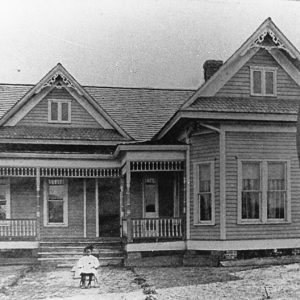calsfoundation@cals.org
Edmondson (Crittenden County)
| Latitude and Longitude: | 35°06’23″N 090°18’37″W |
| Elevation: | 207 feet |
| Area: | 2.99 square miles (2020 Census) |
| Population: | 243 (2020 Census) |
| Incorporation Date: | August 22, 1911 |
Historical Population as per the U.S. Census:
|
1810 |
1820 |
1830 |
1840 |
1850 |
1860 |
1870 |
1880 |
1890 |
1900 |
|
– |
– |
– |
– |
– |
– |
– |
– |
– |
– |
|
1910 |
1920 |
1930 |
1940 |
1950 |
1960 |
1970 |
1980 |
1990 |
2000 |
|
– |
325 |
302 |
308 |
283 |
288 |
412 |
344 |
286 |
513 |
|
2010 |
2020 |
|
|
|
|
|
|
|
|
|
427 |
243 |
|
|
|
|
|
|
|
|
Edmondson is a town on State Highway 131 about three miles south of Interstate 40. As of the 2010 census, two-thirds of the population of Edmondson is African American.
Much of Crittenden County was forested swampland when the county was established in 1825. Fifty years later, the Edmondson area was described as a “terrible canebrake full of bear, panther, wolves, possum, and squirrel.” Land was being cleared before the Civil War for cotton plantations, and a settlement was named for Andrew Edmondson, who arrived from Virginia in the 1840s and died in 1852. His family remained, and a post office bearing their name was established in 1859. A Methodist church for white citizens was built in Edmondson before the war.
Following the Civil War, the Memphis and Little Rock Railroad returned to constructing a railroad that had been started before the war. The line reached Edmondson on March 15, 1868, and a depot was built at the settlement. African-American railroad workers, lumbermen, and farmers built houses by the depot. By 1874, Edmondson had three cotton gins and two churches—one African Methodist Episcopal (AME) and one Baptist. White teachers taught classes for black children at the white Methodist church.
In 1902, black residents organized the Edmondson Home and Improvement Company, which plotted lots in the growing settlement and sold land and homes to African Americans at low prices. The town was incorporated in 1911, and, according to local historians, town officials have always been African American. A Missionary Baptist church was established in 1910, and a new school building opened in 1917. Several stores operated on Main Street, which ran parallel to the railroad tracks, and Edmondson had a livery stable, a mule sales barn, a theater, an ice house, two sawmills, a shingle mill, and a drugstore. There were two white doctors, two black doctors, and a dentist.
Edmondson flooded in 1912 and 1913. A storm (perhaps a tornado) swept through the town in 1916, damaging the AME church and one of the Baptist churches. In 1927, much of the town was destroyed by fire. Edmondson was devastated by the Flood of 1937. After each disaster, the town was rebuilt.
During the Great Depression, the town fell into decline due to the low prices for cotton, but New Deal programs helped to make the land valuable again. A white man named Harold Weaver managed to acquire a significant amount of land from the Edmondson Home and Improvement Company by working through an African American agent. The Southern Tenant Farmers’ Union (STFU) held a rally outdoors in Edmondson in July 1936 after the group was denied permission to meet in one of the churches in the town. The STFU helped to fund a civil suit against Weaver (Edmondson Home and Improvement Company v. Harold E. Weaver) based upon local claims that the county sheriff and tax collector had improperly declared their land delinquent. Meanwhile, Edmonson Home and Improvement Company closed in 1939, and the sheriff sold the confiscated lands to the State of Arkansas, which rendered them back to Weaver, who paid back taxes on 588 lots. The ongoing civil suit was dismissed in 1949 without ever going to trial. While this suit was ongoing, another criminal lawsuit, that of sharecropper Tee Davis, attracted national attention to the plight of African Americans and union members in the state.
In April 1952, the schoolhouse was destroyed by fire, but a brick schoolhouse was ready for the 1953 school year. Crittenden County schools were desegregated late in the 1960s, and students from Edmondson began to attend West Memphis (Crittenden County) schools. A city hall was built in 1974, and the post office was moved into the city hall the next year because the store that had held the post office was destroyed by fire.
In 2002, Edmondson citizens protested the fact that the town had no fire hydrants. Several town officials told a reporter from the Arkansas Democrat-Gazette that racism was the reason for the lack; the Midway Water Association replied that water pipes serving homes and businesses in Edmondson could not handle the pressure required to service hydrants. A news report in 2012 stated that the town still did not have fire hydrants. Twenty-first-century Edmondson has several churches. Residents generally work and shop in West Memphis.
For additional information:
Heard, Kenneth. “Edmondson Seeks Elusive Fire Hydrant.” Arkansas Democrat-Gazette, January 14, 2002, pp. 1A, 3A.
Woolfolk, Margaret Elizabeth. A History of Crittenden County, Arkansas. Greenville, SC: Southern Historical Press, 1991.
Ownbey, Samuel. “‘The Once Peaceful Little Town’: Edmondson, Arkansas, and the Decline of African American Landownership.” MA thesis, University of Arkansas, 2020. Online at https://scholarworks.uark.edu/etd/3702/ (accessed July 6, 2022).
Steven Teske
Butler Center for Arkansas Studies
 Burrows Home
Burrows Home  Crittenden County Map
Crittenden County Map  Fleming Home
Fleming Home 




Comments
No comments on this entry yet.